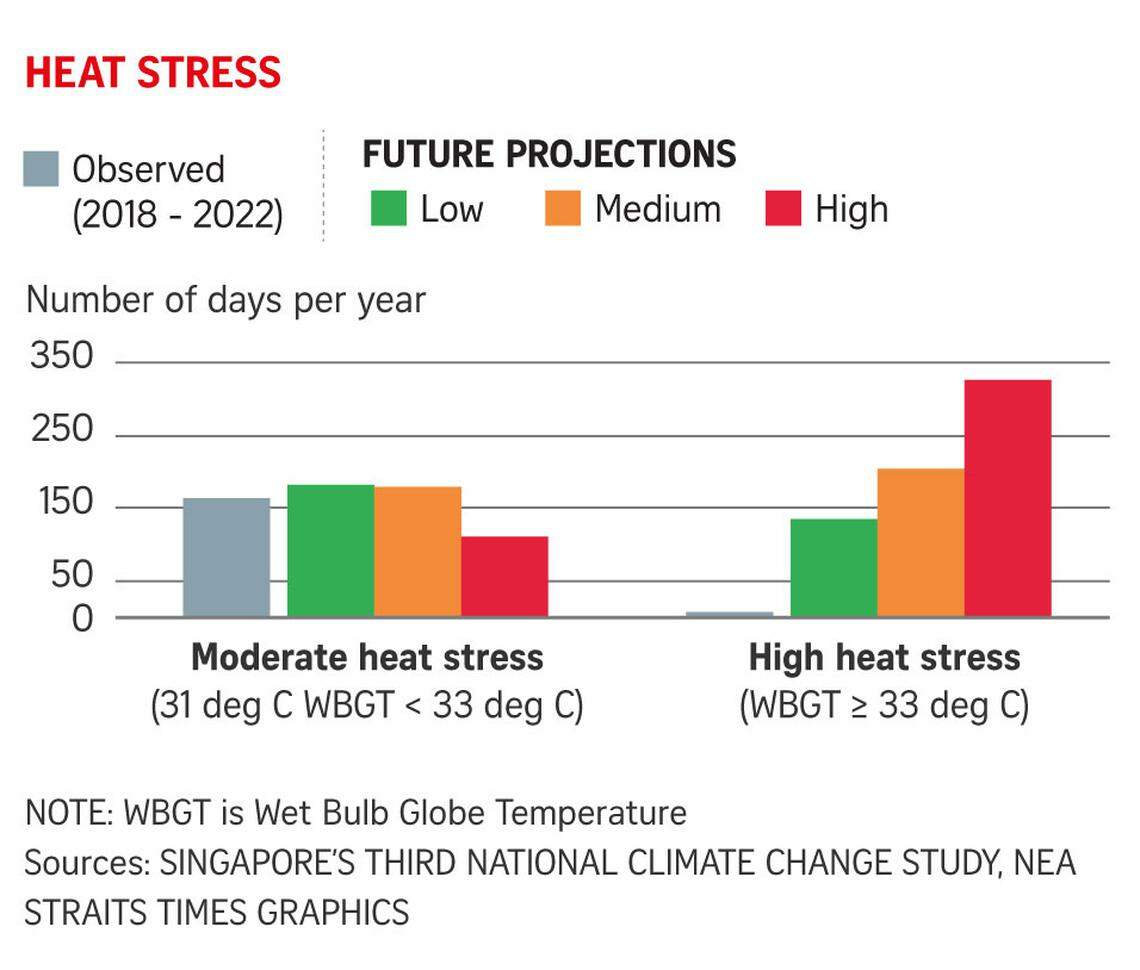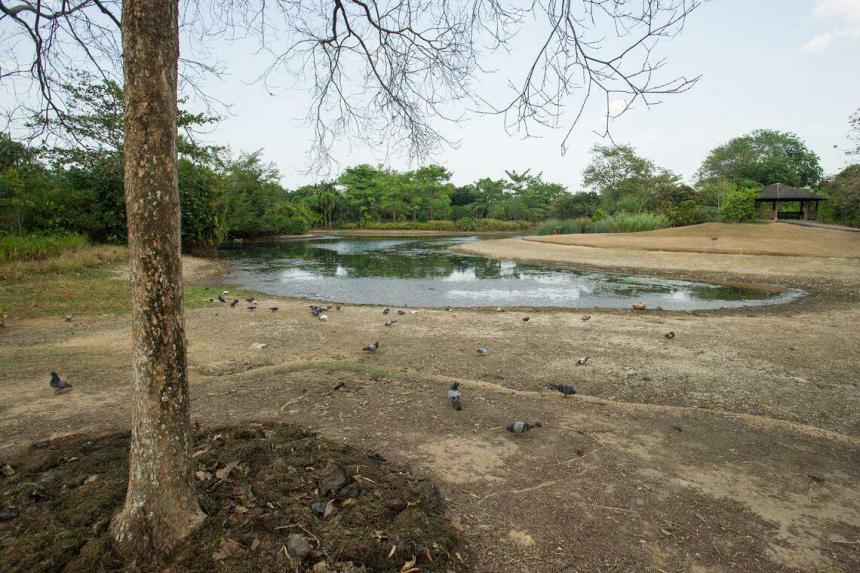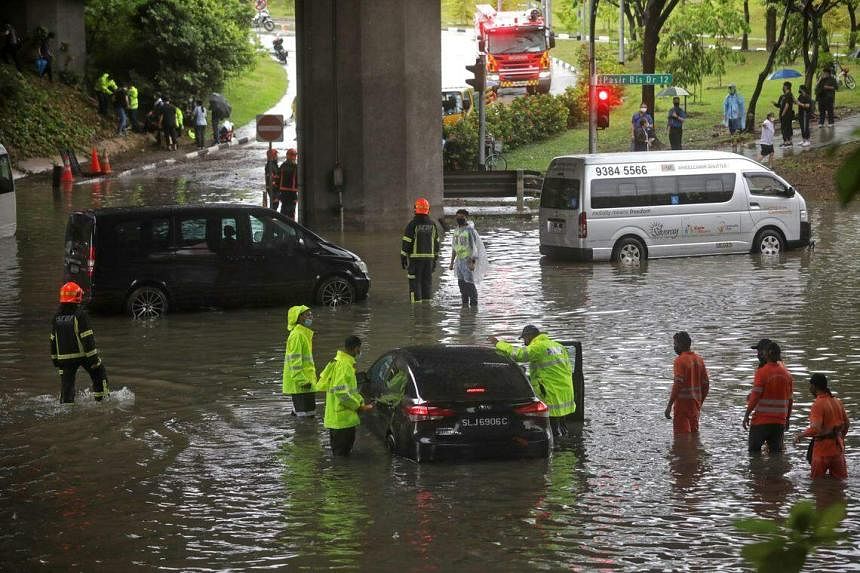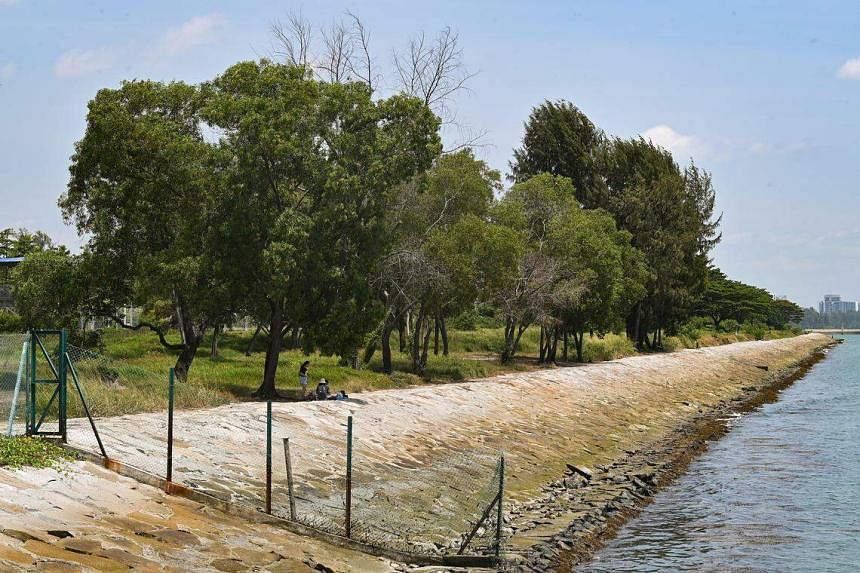SINGAPORE - The Republic’s third national climate change study, released on Jan 5, contains sobering forecasts that see heat and rainfall records shattered.
The Straits Times peers into the climate “crystal ball” to reveal how climate change could unleash its fury on the island state by the century’s end.
1. Scorching heat
More days with mercury crossing 35 deg C
- By end-century, between 41 and 351 days in a year will see temperatures exceeding 35 deg C.
- The projections are between 47 and 189 days for mid-century.
- Singapore currently has around 21 very hot days annually.

Warm nights nearly every day
- Under all emission scenarios, people will experience warm humid nights almost every day, where the temperature is at least 26.3 deg C.
- By 2050, at least 317 nights are expected to be warm.
- Currently, Singapore has about 76 warm nights each year.
2. Heat stress: More frequent exposure
- The average maximum temperature for each day could rise between 0.5 deg C and 5.3 deg C, reaching a high of 36.7 deg C in the worst-case scenario.
- By end-century, a measure of heat stress called the Wet Bulb Globe Temperature (WBGT) will reach 33 deg C for an hour or more each day, from 54 to 326 days.
- A WBGT reading of 33 deg C and above indicates high heat stress, which can lead to heat exhaustion and heat stroke.
- By 2050, high heat stress could be indicated for at least 53 days.
- Between 2018 and 2022, high heat stress conditions were felt on up to eight days each year.

3. Dry spells become regular

- There will be one dry spell every 10 to 60 months, with each episode lasting up to three weeks.
- From around 2080, the dry season between June and August could see less than 31.4cm of rain every three years or so. The 1997 dry season recorded 31.4cm of rain, a historical low.
- A dry spell refers to less than 1mm of rainfall every day for at least 15 consecutive days.
4. Extreme rainfall: Rainy months to get wetter

- The rainy season between November and January is expected to get wetter by up to 58 per cent, under the low emissions scenario.
- At times, the wet season can drench the island with more than 150.7cm of rain, a historical high recorded in 2006.
- The low emissions scenario could yield the highest amount of yearly rainfall of up to 323.4cm. Currently, Singapore receives about 250cm of rainfall each year.
- The daily extreme rainfall during April and May – which generally do not have much downpour – could almost double by end-century.
5. Sea level rise: Seas to rise by more than 1m in worst-case scenario

- By 2100, mean sea levels could rise by 23cm in the best possible scenario, or by 1.15m in the worst-case scenario.
- If fossil fuel use accelerates, sea levels could rise by around 2m by 2150.
- The areas near Sultan Shoal, between Tuas and Jurong Island, are at higher risk of being submerged. Under the low emissions scenario alone, the sea level around Sultan Shoal is expected to rise by 74cm by 2100. At worst, it could reach 2.12m by 2150.
6. Stronger winds

- The speed of strong wind gusts could increase by up to 10 per cent by 2100.
- Strong gusts are often associated with thunderstorms and the Sumatra Squall, and can damage infrastructure, uproot trees and send bins and containers flying.
How is Singapore adapting?
The island state will consider all possible climate outcomes, including the high emissions scenario, in its adaptation plans. Here is a glimpse of some solutions:
Reducing flood risks
- It is not feasible to expand all drains to cater to every extreme rainfall event, but $2 billion has been spent over the last decade to build and upgrade drainage infrastructure. Residents who live in flood-prone areas can borrow flood protection devices from national water agency PUB.
- PUB will plan coastal adaptation measures for up to 2m of sea level rise, which can serve Singapore up to around 2150.
Building resilience against heat
- Heat in urban areas will be reduced by intensifying greenery, coating HDB blocks with cool paint and designing towns with “wind corridors” to improve ventilation.
- Research is under way to help vulnerable groups such as outdoor workers, seniors and children become more heat-resilient.
Food security
- Essential food items will be stockpiled.
- The agri-food industry’s ability to produce 30 per cent of Singapore’s nutritional needs by 2030 will be built up.
Preventing accidents and damage
- Trees will be inspected and monitored using technology to prevent them falling during severe weather. If needed, they may be pruned at high-risk locations to avoid accidents.
- Building codes will be reviewed and transport, telecommunications and energy infrastructure improved to withstand higher temperatures and strong wind gusts.


